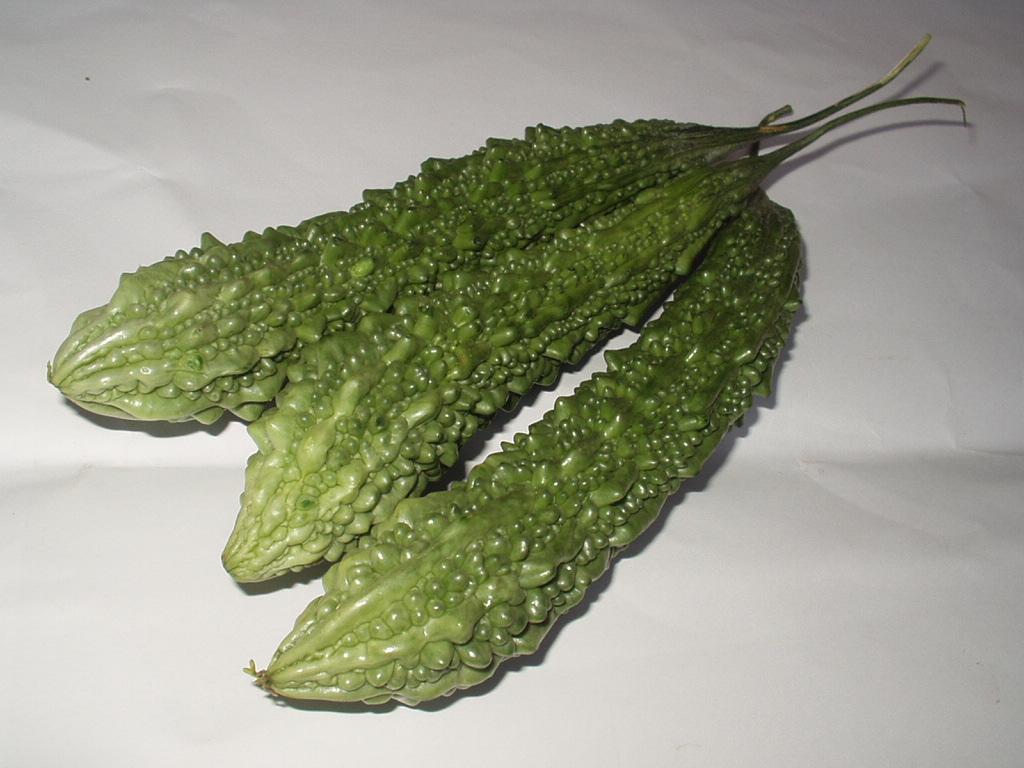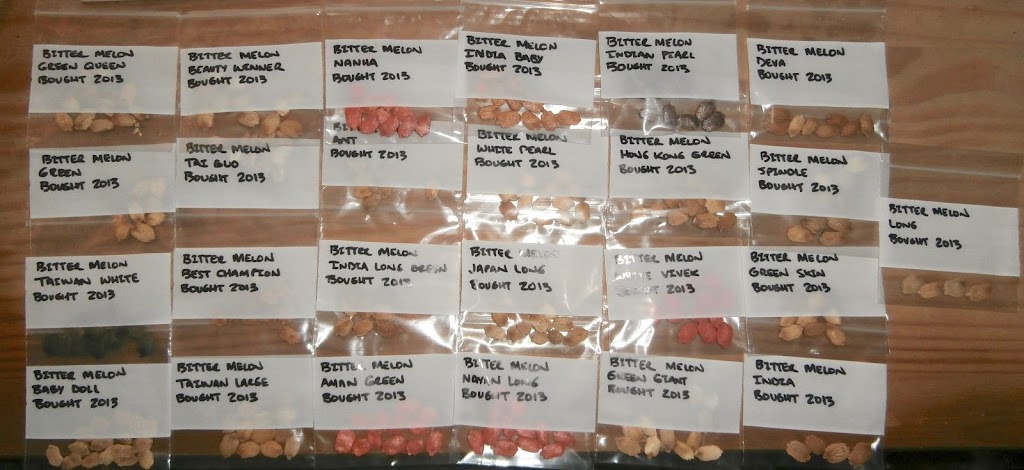bitter melon (Momordica charantia), Blog, breeding, trials
Bitter melon: Tastes better than a punch in the face
Bitter melon (Momordica charantia) is a tropical cucumber relative, originally from India and grown widely in southeast Asia. As you might expect from the name, it is pretty bitter, although it is generally eaten young before the bitterness reaches its peak.
 |
| Bitter melons |
In my experience, there are two categories of people in the world: those who smile when you feed them a dish that contains bitter melon and those who spit it out and maybe even take a swing at you. I am in the former category. Bitter melon is one of my favorite vegetables; I am particularly fond of a breakfast dish of sliced bitter melon scrambled with eggs.
Unfortunately, bitter melon comes from tropical climate and I live in a decidedly non-tropical climate. As I also live pretty far from any large cities, it is also difficult to get bitter melon even as an import. So, I try to grow bitter melon every year. I get a few early fruits, but fall far short of a satisfying pile of good sized bitter melons. To accomplish this, I start seeds early, grow in containers, under cover, and the return on my investment of effort is still poor.
A few years ago, I thought I had a solution: we discovered canned bitter melon in an Asian market. Imagine canned cucumber (not pickled, just canned) and you’ll have some idea of the canned bitter melon experience. The taste wasn’t terrible, but the texture was distressing, to say the least.
So, if I want to eat bitter melon, it seems I will have to grow it. Unfortunately, none of the varieties that I have tried have done well. We just don’t get enough heat. So far, with other borderline crops, I have had good luck crossing large numbers of varieties together and selecting from them better performing progeny. Bitter melon is an outcrosser, so this approach might be a good way to start down the road to a more temperate bitter melon.
This year, I have assembled seed of every bitter melon variety that I could find. I will grow out a few of each in the greenhouse and attempt to grow them to maturity under plastic. Based on past experience, I expect that I will probably be successful with about a third of the varieties that I try. Because we keep bees on site, I can expect to get a lot of cross pollination. I will try to get as much seed as possible this year.
 |
| Bitter melon seed that will be used in my uncontrolled cross |
Assuming that effort is successful, next year, I will again start many seeds in the greenhouse, but plant them outdoors without cover, hoping to get a few that have won the genetic lottery and can grow in our cool temperatures. Maybe I will get some, maybe I won’t. If not, I’ll keep trying. For my efforts, I can at least look forward to harvesting a few small fruits at the end of the season that would otherwise be killed by frost.
Of course, I could save myself the trouble and wait for someone else to produce a cool climate bitter melon. Unfortunately, I meet a lot more people who fall into the “punch you in the face” category than otherwise, so I have a feeling that I might be a long time waiting.

How did that work for you? In 2018 we finally bought bitter melon seeds that actually produced early and prolifically — more bitter melons than we could eat, and that is a LOT of bitter melons — in zone 6 (almost 5) SW Ontario. Our friends in Windsor (/Detroit) had been growing beautiful bitter melons (and other ) for years, and we had been envying their climate for years. Up here near Sarnia (/Port Huron), but just far enough inland not to get the benefit of the lake effect weather, we had had nothing but failures. The variety is Big Top and we bought it from Baker Creek. We even got seeds, although we lost every one of the first batch we saved to mice (the kind that stashes seeds and will happily spend the night moving every single seed to storage) and I bought seeds a second time this year in case the second batch we saved were slightly underripe.
Just a comment for Bill – not sure which bitter melon and scrambled egg dish to which you refer, but look up “ginisang ampalaya” for a tasty Filipino twist on scrambled eggs with bitter melon. Another dish with bitter melon (ampalaya in Filipino) in it is pinakbet.
Ma sarap!!!